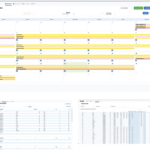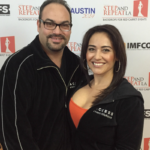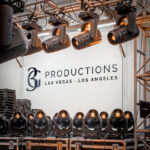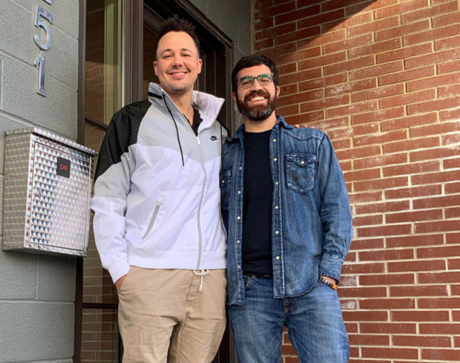
On-Call Production Prowess for the Entertainment Industry
The entertainment A-market requires the production team to have a high level of confidence. The need to have an intellectual command of your design, the understanding of the systematic technical aspects behind said design coming to fruition, and the requirement to keep everything organized and on budget isn’t a one-person job. Production is a team sport, and the team is comprised of people who have mastered each department of the design process. The design process most often goes from an idea to a basic sketch. But from there it must find its way onto a CAD 2D wireframe plot, a 3D plot, a Visualizer program and some renders. Then one must logistically figure out if your idea will actually fit in the designated venue(s) and is there a B system plan available. Add in the preprogramming time it takes to setup your console. This is all before the first cue is programmed. Who has time for all this?
Enter two friends, André Petrus and Matt Geasey (pronounced Geazy), who have years of working together solving problems, engineering systems, and making shows work. These two well-known professionals have created a company called Clear All Visuals that is geared towards providing a soup-to-nuts approach to all things systematic in a production — from CAD drafting and planning your system to renderings, programming, and creative assistance, both onsite and off. “We’re not looking to design your production.” says Petrus. “We specialize in giving designers the long list of services they need to get their show mounted and to give them confidence to do what they do, while leaving the other stuff to us.”

A Creative Partnership
The story of this partnership is rooted in hard work. As the two friends worked on shows together, they became a go-to team for systems and programming, and the rest worked itself out. Based in Nashville, “we partnered last year, after we found ourselves tag-teaming shows over the past couple of years,” says Petrus. “I was doing a lot of lighting programming and Geasey was doing a lot of the drawings, and we started like a tag team in sports, handing the baton back and forth. We ended up working so well together that we partnered up and started our company, Clear All Visuals.”
Geasey elaborates on Clear All Visuals’ “Designer Support” offering. “Basically what we do is act as a team for designers to come to us with anything — a napkin sketch, random idea (Hey man, is this even physically possible?), or whatever we can help them with to make their show a reality — literally anything. We provide not only our collective experience and knowledge base, but other hard services that they need. This could be system drawings, 3D modeling and rendering… Perhaps they need us to come program some lighting or media servers, or maybe they just need us to crank out some renderings for their team. We function like a designer extension — two large groups of skills that we can use to help others showcase as well as produce their art.”
As part of its designer support for entertainment production, Clear All Visuals can offer clients Vectorworks drawings, production renderings, pre-visualization services for programming (MA2 and MA3 in both programming studios), 3D modeling, creative assistance and lighting/video programming. Their location in Nashville offers clients a creative space for pre-programming, creative meetings, or use as a home base for a few weeks while their productions are taking shape. “Giving people a place to work hard and make the magic while we provide for them what they need for that magic is part of the allure,” says Geasey, noting the “great fit” between their Nashville location and the number of productions that “either start here or stop here.”
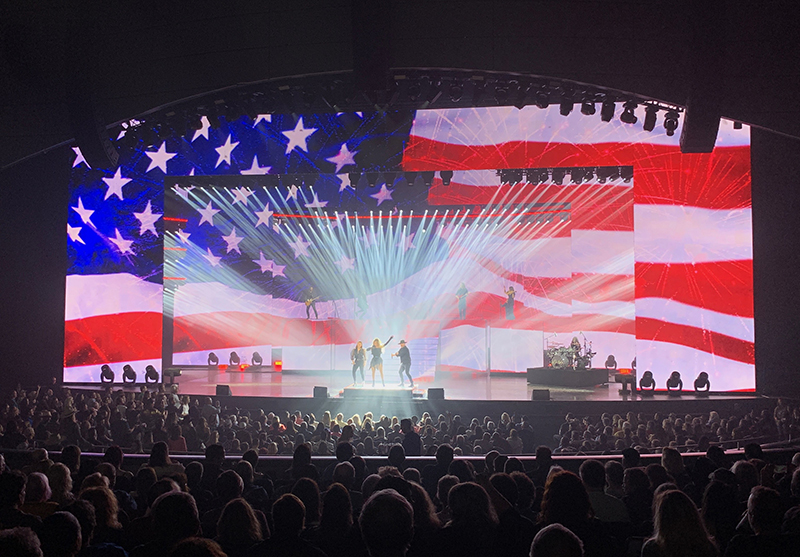
Impressive Track Record
Both Petrus and Geasey have become known for their prowess as programmers and system creators, working in a symbiotic relationship with top designers including Sooner Routhier, Mark Butts, Chris Cockrill, Jeremy Lechterman, Jackson Gallagher, Jesse Blevins, Earlybird, Travis Shirley, Mark Carver, Rob Sinclair, Brian Jenkins, Mike Swinford, Jonathan Goldstein and George Jackson, among others. Often, says Petrus, “we’re brought in from the very beginning. So when we’re brought into a project, some people just come to us with a napkin sketch with an amazing concept, but no idea how to make their vision a reality. We help them figure out how to do it: we translate everything into and back to work drawings, which helps them figure out what works and what doesn’t work. We’ll get all the way from the concepts to drawing packages to bid packages to the point where we’re reporting with the production manager as to help determine logistical needs of the design.”
“We’ve found on multiple occasions that designers, especially designers that haven’t been exposed to the technical aspects of what we do or perhaps had much time in the field, haven’t established relationships with vendors,” Geasey says. “That is a particularly important aspect of our work as well — coordinating the technical side of a design with the wide variety of vendors on any given project, all the way down to the crew chiefs. This allows us to keep our clients on track with the smoothest possible production schedule and show experience. Lighting especially, experiences a lot of substitution practices, in which the designer might have specified a certain fixture, but instead they settle for a substitute. Sometimes this is driven by availability, other times price point. We are knowledgeable in this area and can help make the best choice, making sure the chosen fixtures are functional in the designer’s plans.”
Specialty tech, together with creative ideas can make a large mess if you’re not completely in sync with your system, and this is yet another reason that Petrus and Geasey started Clear All Visuals. “The amount of proprietary systems out there is staggering, but that is what we do best,” says Petrus. “When a client wants to use a unique system like Cast’s BlackTrax tracking system, for example, we know that they can quote that system all day long, but if there isn’t a liaison between the crew and a system with that kind of complexity, the client is asking for a disaster.
“When a major technical system is implemented in a design, we offer an intermediary system service that allows us to manage and communicate with other departments on the production,” Petrus continues. “This ensures that no one is left out of the loop or any neglected matter falls through the cracks. And when things do go wrong, as they do, that liaison needs to be available now to solve their issue now, not by trying to call a lighting vendor office at 10 p.m. on a Friday. We understand the systems, and that understanding makes implementation considerably easier.”

Providing More Time to Design
Geasey observes that “part of our business also is being able to give a designer more personal time to work on the art of the show by letting us worry about the systems. If we’re able to give the design team an additional set of days to work on the show by helping with the back end of things, we feel we’ve done a major service to our client. If we have a client in our studios doing preprogramming in a previz suite, we coordinate and manage so that when the designer walks into rehearsals, they’re ahead in the game, which saves everyone money. Preparedness helps save money and personal time, which is almost as good as money.”
In addition to acting as a sort-of super liaison between designers and other technical teams, Clear All Visuals has the designer in mind all the way through his or her branding. Work that comes from Clear All Visuals is branded as if it came from the designer themselves. After all, they’re working on someone else’s design. “We’re not interested in having this big logo of ours on everything,” says Petrus. “We’re working as the designer’s team, so we want all of the work we produce to look and feel as if it came directly from the designer. We want people to be able to have the best-looking experience as well as the best practical experience, and we feel that continuing a designer’s branding across their deliverables is a great practice. We truly want to help productions and designers as best as we can, in any way we can.”
The mantra of “help any way we can” includes an assist with designer paperwork. “We understand how much work it takes to get something like a full package of paperwork, plots, renderings, and the like together for a designer or design team,” says Geasey. “Our team expands across several different avenues of talent, and when we need to call in a specialist to do something like create a render package, we call on someone from our team whose sole purpose in life is to produce renderings. When we’re on your show, we want you to have the best of what we know the industry to be, our reputations are staked on it. In this business there aren’t any second-place prizes, and that’s how we want every experience to be — like it was the best, biggest, and only show we’re working on. We achieve that by having a large group of people with top skillsets on their plate that we can call on to help us produce what the designer needs.”
Petrus and Geasey have been around for more than a decade, working shows together and being the problem solvers that people rely on to make things work. “When we first got into doing this, it was fun, and we made lots of friends,” Geasey relates. “When we started doing this, it was the work and the people who made this something to make a life on, something that was enjoyable. That’s a really critical part of our work, the integrity that we have individually, and as a team. The best thing I do all day is work with my friends; maintaining that integrity while bringing our best work to our clients and friends is what all of this is about in our industry. At least it should be, I know it is for us.”

For more information on Clear All Visuals, visit www.clearallvisuals.com.
